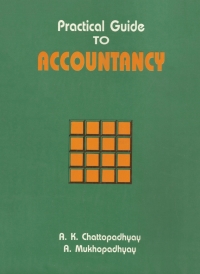Question
1. Which of the following is considered cash? a. 120-day Treasury bill b. Money market checking accounts c. short term investments d. Receivables 2. Deposits
1. Which of the following is considered cash?
a. 120-day Treasury bill
b. Money market checking accounts
c. short term investments
d. Receivables
2. Deposits held as compensating balances
a. are usually some percentage of the committed amount.
b. if legally restricted and held against short-term credit may be included as cash.
c. if legally restricted and held against long-term credit may be included among current assets.
d. none of these.
3. Cash that is restricted in some way and not available for current use usually is reported as
a. Cash equivalent
b. Investment and funds
c. Other assets
d. Both b and c.
4. If a company employs the gross method of recording accounts receivable from customers, then sales discounts taken should be
a. reported as a deduction from sales in the income statement.
b. reported as an item of "other expense" in the income statement.
c. reported as a deduction from accounts receivable in determining the net realizable value of accounts receivable.
- reported as sales discounts forfeited in the cost of goods sold section of the income statement.
5. Which of the following methods of determining bad debt expense does not properly match expense and revenue?
a. Charging bad debts with a percentage of sales under the allowance method.
b. Charging bad debts with an amount derived from a percentage of accounts receivable under the allowance method.
c. Charging bad debts with an amount derived from aging accounts receivable under the allowance method.
d. Charging bad debts as accounts are written off as uncollectible.
6. Which of the following is the generally accepted method of determining the amount of the adjustment to bad debt expense using the income statement approach?
a. A percentage of sales adjusted for the balance in the allowance
b. A percentage of net credit sales not adjusted for the balance in the allowance
c. A percentage of accounts receivable not adjusted for the balance in the allowance
d. An amount derived from aging accounts receivable and not adjusted for the balance in the allowance
7. Allister Company does not use the allowance method to account for bad debts and instead any bad debts that do arise are written off as bad debt expense. What problem might this create if bad debts are material?
a. Receivables likely will be understated.
b. No problems are created.
c. Receivables likely will be overstated.
d. Bad debt expense likely will be overstated.
Use the following information for questions 8 and 9.
A trial balance before adjustments included the following:
Debit Credit
Sales $425,000
Sales returns and allowance $14,000
Accounts receivable 53,000
Allowance for doubtful accounts 760
8. If the estimate of uncollectibles is made by taking 1% of net sales using the income statement approach, the amount of the adjustment is
a. $3,350.
b. $4,110.
c. $4,250.
d. $4,870.
9. If the estimate of uncollectibles is made by taking 10% of gross account receivables using the balance sheet approach, the amount of the adjustment is
a. $4,540.
b. $5,300.
c. $5,224.
d. $6,060.
10. Under the allowance method of recognizing uncollectible accounts, the entry to write off an uncollectible account
a. increases the allowance for uncollectible accounts.
b. has no effect on the allowance for uncollectible accounts.
c. has no effect on net income.
d. decreases net income.
| 11. | The purpose of assigning accounts receivable is to:
|
12. Cash may not include: a. Foreign currency.
b. Money orders.
c. Restricted cash.
d. Undeposited customer checks.
13. Accounts receivable are normally reported at the: a. Present value of future cash receipts.
b. Current value plus accrued interest.
c. Expected amount to be received.
d. Current value less expected collection costs.
14. Which of the following does not reduce the balance in accounts receivable? a. Returns on credit sales.
b. Collections from customers.
c. Recognizing bad debts expense.
d. Write-offs.
15. If a company uses the balance sheet approach to estimate bad debt expense, bad debt expense for a period can be determined by: a. Multiplying net credit sales by the bad debt experience ratio.
b. Adding the beginning balance in the allowance for uncollectible accounts to the provision for uncollectible accounts and deducting the desired ending balance in the allowance for uncollectible accounts.
c. Multiplying ending accounts receivable in each age category by the expected loss ratio for each age category.
d. Taking the difference between the unadjusted balance in the allowance account and the desired balance.
Step by Step Solution
There are 3 Steps involved in it
Step: 1

Get Instant Access to Expert-Tailored Solutions
See step-by-step solutions with expert insights and AI powered tools for academic success
Step: 2

Step: 3

Ace Your Homework with AI
Get the answers you need in no time with our AI-driven, step-by-step assistance
Get Started


